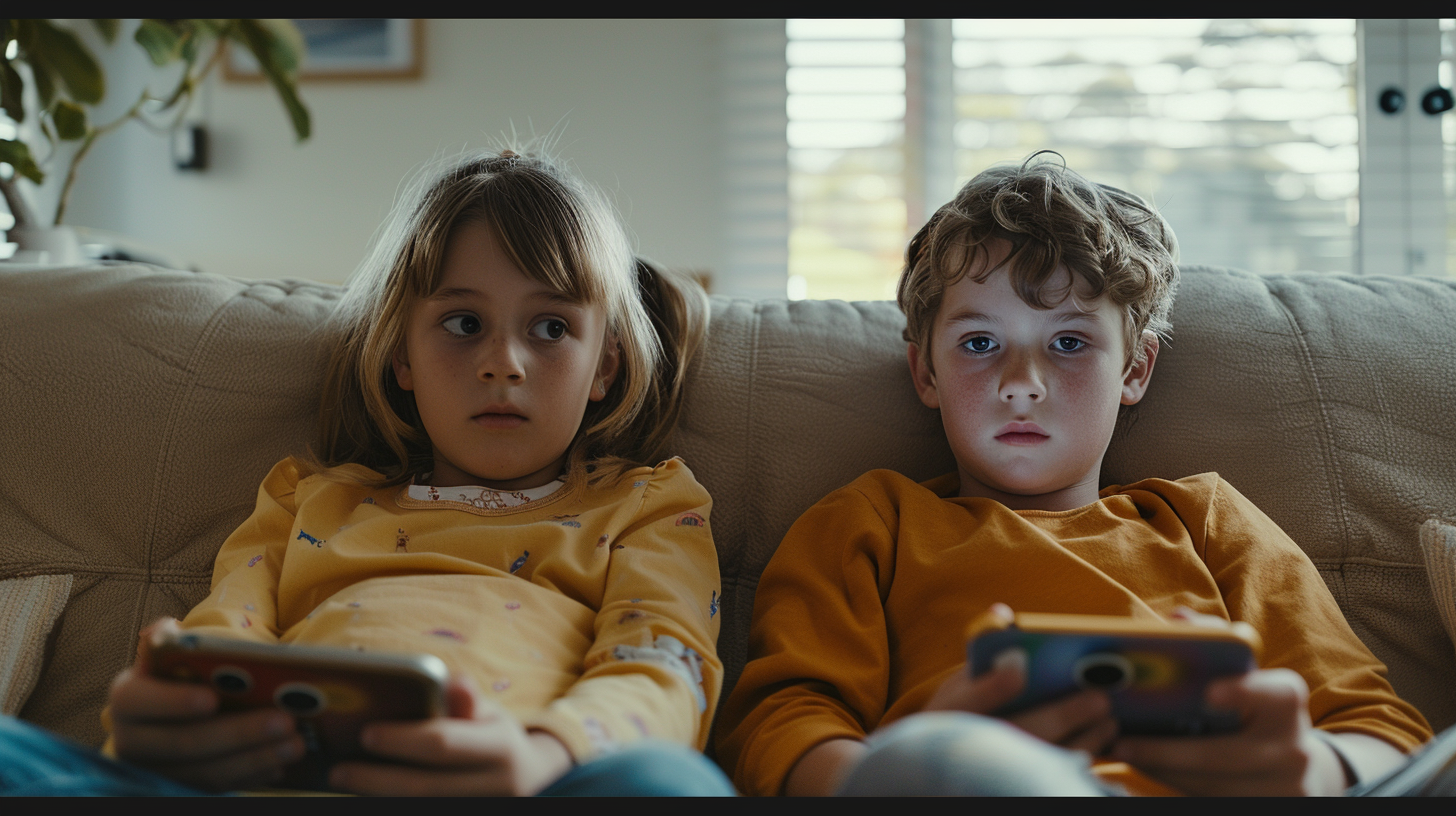Are you struggling to find the right balance in your family’s screen time habits? In today’s digital age, supporting young ones in navigating the world of screens can be overwhelming. To assist families, the Alannah and Madeline Foundation has introduced Digi Talk, an online safety hub packed with valuable resources to guide you through the digital landscape.
Screens and devices are now deeply embedded in our lives, serving as tools for work, play, learning, and socialising. It’s crucial to establish clear expectations around screen usage within your household rules, just like you do for behaviour in public or at home.
- Healthy Tech Approach: Instead of fixating on daily screen time limits, focus on the quality of screen use, distinguishing between sedentary screen activities and educational ones. Think of it like differentiating between nutritious and less nutritious food choices; moderation is key.
- Signs of Imbalance: Look out for signs in your child’s behaviour that may indicate an unhealthy screen-time balance, such as fatigue from late-night device use or neglecting physical activities due to excessive screen time.
- Becoming Screen Smart: Create a Screen Smart Plan involving your entire family to strike a harmonious balance with technology. Utilise a downloadable template provided in this article for your child to craft their personalised plan.
Take proactive steps by establishing clear rules on where and when screens can be used, setting time limits for tech activities, and prioritising shared non-screen activities fostering a healthy relationship with technology. By modelling responsible screen behaviour and sticking to the Screen Smart Plan, you pave the way for your family to embrace a balanced approach towards screen time.
- Set Boundaries: Define areas for tech usage and time limits, keeping bedrooms screen-free to ensure a balanced environment.
- Encourage Communication: Have open conversations with your child about age restrictions and the purpose behind setting boundaries for accessing content.
- Embrace Balance: Strive for a healthy mix of screen and offline activities, prioritising tasks like homework and chores before indulging in screen time.
- Promote Shared Experiences: Identify activities the whole family can enjoy together, encouraging a positive relationship with technology and promoting family bonding.
- Lead by Example: Demonstrate responsible screen use, adhering to the Screen Smart Plan yourself. Your actions speak volumes and reinforce the importance of balanced screen habits for the entire family.
Finding Balance: Becoming a Screen Smart Family
Supporting young people in the digital age can be overwhelming. To assist families, the Alannah and Madeline Foundation created an online safety hub – DigiTalk – with resources to help navigate the digital world. Screens and devices are now firmly part of our world. We all use them to work, play, learn, and socialise – and so do our children. Establishing a healthy approach to technology is essential for maintaining balance in today’s digital age.
Establishing a Healthy Approach to Technology
While there are recommended guidelines for daily screen time, focusing on the type of screen use can be more helpful. Just like food, some screen activities are more beneficial than others. Moderation is key. Instead of imposing complete bans on screen time, monitoring screen time and setting rules can help your family find a harmonious relationship with technology. Signs that the balance isn’t right include tiredness, agitation, sneaking devices, neglecting other activities, lack of exercise, and exposure to inappropriate content.
Taking Action: Becoming a Screen Smart Family
Creating a Screen Smart Plan is crucial for maintaining a healthy balance, involving the whole family in its development increases the likelihood of success. Components of the plan include defining tech usage areas, seeking permission for new content, setting time limits, identifying shared activities, and introducing incentives for adherence to the rules. It’s important to model the desired behaviour and demonstrate commitment to the agreed-upon rules.
Key Takeaways
-
Set Clear Boundaries
Establish rules and guidelines for screen use within the family, designate areas for tech usage, and restrict screen time in certain spaces like bedrooms.
-
Prioritise Communication
Engage in open and honest discussions with your child about the purpose and importance of age restrictions for accessing new games or shows.
-
Strike a Balance
Encourage a healthy balance between screen time and other activities by defining appropriate time limits for tech use and ensuring tasks such as homework and chores are completed before engaging with screens.
-
Foster Shared Experiences
Identify activities that the whole family can enjoy together, involving screens and promoting offline interactions, to model a balanced and positive relationship with technology.
-
Lead by Example
As a parent or caregiver, adhere to the Screen Smart Plan and demonstrate responsible screen use. Modelling the desired behaviour reinforces the importance of maintaining a balanced approach to screen time for everyone in the family.

| Key Points | Details |
|---|---|
| Establishing a healthy approach to technology | Focus on the type of screen use rather than strict time limits, akin to understanding different types of foods for nutrition. |
| Signs that the balance isn’t right | Identify behaviours like tiredness from late-night device use, agitation when asked to stop screen time, neglect of other activities, lack of physical exercise, exposure to inappropriate content. |
| Taking action: becoming a screen smart family | Create a Screen Smart Plan involving the whole family; use template for each member to define screen usage areas, seek permission for new content, set time limits, engage in shared activities, and introduce incentives. |
| Key takeaways | 1. Set clear boundaries for screen use. 2. Prioritise communication about content rules. 3. Strike a balance by defining time limits. 4. Foster shared experiences with technology. 5. Lead by example in responsible screen use. |



